The 9th Annual 3MT Competition Contestants
Thirteen University of Winnipeg students from across five of our graduate programs participated in the Ninth Annual Three-Minute Thesis Competition.
Natassia D'Sena took home the first-place prize of $1,000 with her presentation "Virtual DriveThrus: Is OnlyFans the McDonald's of the Sex Industry?" and moved forward to compete at the 2022 Western Regional Competition.
Bradley Howell was the People's Choice winner and took home a $500 prize with "Fishing for GIANTS: Response cues for survival".
Learn about the participants and watch their 3MT presentations below!

Biography: My name is Natassia D’Sena, I am a current Masters student with the Department of Criminal Justice at the University of Winnipeg. My current research interests lie in sex work, specifically, I seek to explore how evolution of technology and media have made it easier for sex workers to conduct their work online, and how the labour process online differs from street-based sex work. Aside from being a student, I spend majority of my time hiking, skiing and adventuring through the Canadian Rocky Mountains.
Virtual Drive Thrus: Is OnlyFans the McDonalds of the Sex Industry?
Evolution of technology has allowed for various industries to adapt to an online platform, including education, retail, and even medicine. With this shift to an online realm, society has grown to expect efficiency and predictability from these industries, exemplified by reduced delivery times, increased accessibility to various products and resources, all while conducting this business from the comfort of the consumers own home. Sex work is no stranger to this shift to the online realm with the rise of websites for purchasing and viewing of porn, camming, erotica, etc. Similar to the ease of consumers, online platforms further provide ease for creators or sellers. This research aims to apply Ritzers concept of McDonaldization to the process of sex work on OnlyFans to determine how predictability, efficiency, control, and calculability have made it easier and safer for sex workers to conduct their work online while simultaneously increasing their profits.
Watch Natassia's Presentation
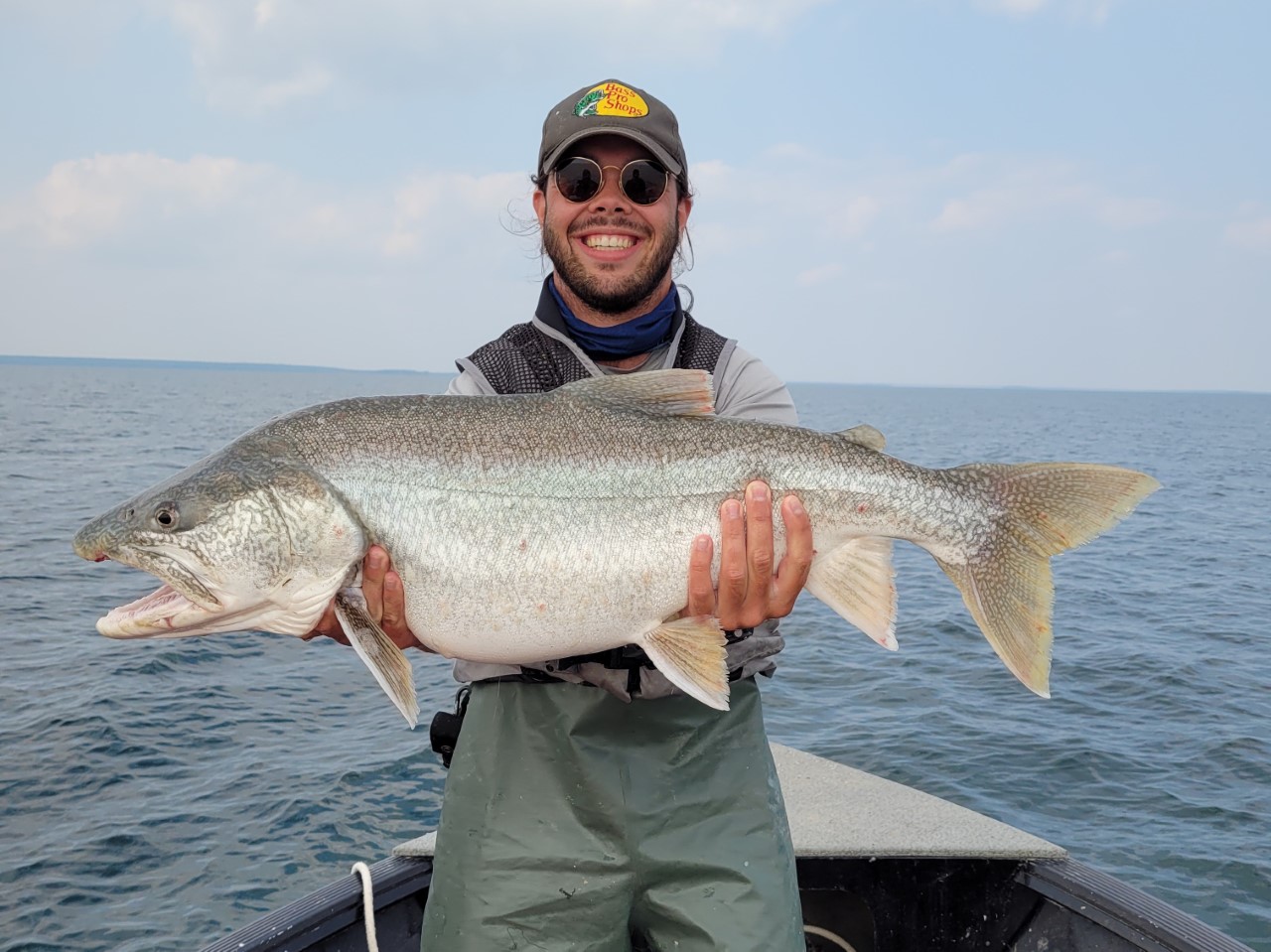 Biography: Bradley completed his B.Sc. with a joint major in Biology and Environmental & Resource Science at Trent University in 2021. During the third year of his degree, he completed an academic year abroad at the University of the Highlands & Islands – Inverness College studying environmental science and marine resource management. He was involved in a case study with Adaptive Management of Barriers in European Rivers for the River Garry Quoich Dam in Scotland which used benthic macroinvertebrate biodiversity to address salmonid habitat restriction. Bradley was an undergraduate student in the Raby Lab for Integrative Fish Ecology during the fourth year of his degree, completing research involving monitoring embryo success in two strains of Ontario brook trout in relation to adult exposure to pulsed-DC electrofishing. Currently he is a first-year M.Sc. student in the Bioscience, Technology, and Public Policy program at the University of Winnipeg and is a member of Dr. Caleb Hasler’s Fish Biology and Conservation Lab. His research focuses on behavioural and physiological responses of Manitoba’s trophy-sized lake trout (Salvelinus namaycush) to catch-and-release angling.
Biography: Bradley completed his B.Sc. with a joint major in Biology and Environmental & Resource Science at Trent University in 2021. During the third year of his degree, he completed an academic year abroad at the University of the Highlands & Islands – Inverness College studying environmental science and marine resource management. He was involved in a case study with Adaptive Management of Barriers in European Rivers for the River Garry Quoich Dam in Scotland which used benthic macroinvertebrate biodiversity to address salmonid habitat restriction. Bradley was an undergraduate student in the Raby Lab for Integrative Fish Ecology during the fourth year of his degree, completing research involving monitoring embryo success in two strains of Ontario brook trout in relation to adult exposure to pulsed-DC electrofishing. Currently he is a first-year M.Sc. student in the Bioscience, Technology, and Public Policy program at the University of Winnipeg and is a member of Dr. Caleb Hasler’s Fish Biology and Conservation Lab. His research focuses on behavioural and physiological responses of Manitoba’s trophy-sized lake trout (Salvelinus namaycush) to catch-and-release angling.
Fishing for GIANTS: Response Cues for Survival
Catch-and-release (C&R) angling is commonly used to promote survival of fish caught using rod and reels. While this method is considered effective in preserving wild stocks of fish, it relies on the assumption of high fish survival after release. Lake Trout are susceptible to recreational angling, which can induce stress during different parts of the process and compound with other factors to potentially lead to delayed mortality. I plan to examine how trophy-sized fish respond behaviourally and physiologically to C&R angling by monitoring them over a series of fixed timepoints. This will allow me to determine the tolerance of trophy-sized fish to C&R, and the risk that it poses to their populations. Lake trout provide economic support to northern communities, so the persistence of C&R fisheries is vital. This study will allow fisheries managers to tailor management decisions for these fisheries and enhance them for the fish, anglers, and community.
Watch Bradley's Presentation
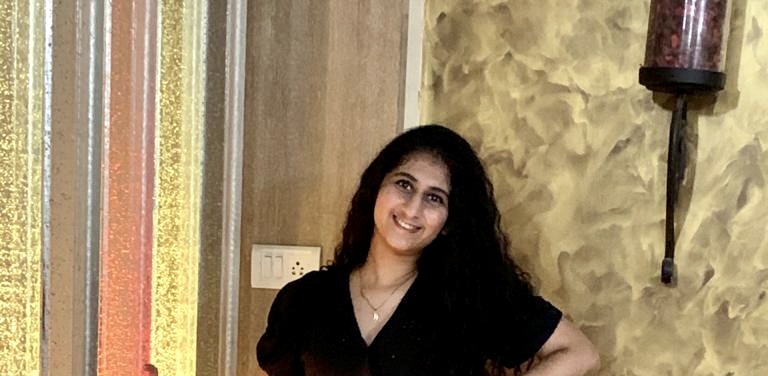
Biography: Reading about infectious diseases as an undergraduate, I came across White Nose Syndrome caused by the fungus P. destructans, and was moved by the dramatic decline in the population of little brown bats this fungus caused. My dream to work towards saving the bat population was made possible under the supervision of Dr Anuraag Shrivastav and Dr Craig Willis.
Not a lot is known about the genetic mechanism leading White Nose Syndrome in bats. My research is going to focus on finding alterations in the genetic expression that leads to various metabolic changes in bats making it hard to fight fungal infection. I performed preliminary research under my supervisors using various bioinformatic tools available and the results got me excited to explore further.
At the time of the pandemic when everyone blames bats for millions of deaths across the world, it is interesting to work on a disease that has killed millions of bats just in the North America. I am thrilled about testing my findings from bioinformatics in actual samples from the bats in wet lab. I am very hopeful about finding new leads into the molecular basis of pathogenesis of this disease and developing potential targets for its prevention and treatment.
Molecular Predictors for the Management of White-nose Syndrome in Bats
In the past 15 years, white-nose syndrome (WNS), caused by the fungus Pseudogymnoascus destructans (Pd), has killed millions of hibernating little brown bats (Myotis lucifugus) in North America. This invasive fungal pathogen causes hibernating bats to deplete winter fat reserves too quickly leading to starvation. The potential for bats to survive the winter with WNS could reflect their ability to enhance pre-winter fat reserves, withstand starvation during winter or mount an immune response to Pd. My study focuses on understanding molecular mechanisms underlying WNS progression in little brown bats. I will test the hypothesis that molecular connections between metabolic pathways related to fat storage and expenditure, and the immune system, drive progression and pathogenesis of WNS. Understanding these connections will help identify molecular markers that can predict WNS progression and potential survival of bats. This has implications for understanding the potential of different bat colonies and/or population to persist which is important for prioritizing management responses to this conservation crisis.
Watch Anouska's Presentation
 Biography: Haven obtained her B.Sc. (Hons) at the University of Winnipeg in 2020 in Biochemistry and is now pursuing her Master of Science in Environmental Studies. Her current research focuses on the introduction of organic contaminants in the environment from manure-amended agricultural fields in the Prairies. Her research will provide insight on how organic contaminants are transported into the environment and help guide policies for sustainable manure management in the Prairies.
Biography: Haven obtained her B.Sc. (Hons) at the University of Winnipeg in 2020 in Biochemistry and is now pursuing her Master of Science in Environmental Studies. Her current research focuses on the introduction of organic contaminants in the environment from manure-amended agricultural fields in the Prairies. Her research will provide insight on how organic contaminants are transported into the environment and help guide policies for sustainable manure management in the Prairies.
Where’s the manure? Transport and fate of antibiotics and estrogens during snowmelt
Veterinary antibiotics are used to maintain animal health, but there are concerns about antibiotic runoff in manure amended fields because up to 90% of the initial antibiotic dosage is excreted from the animal. Liquid swine manure is widely used as fertilizer on the Canadian Prairies, leading to a high risk of soil and freshwater contamination. In this region, an average of 75% of annual runoff occurs during the brief snowmelt period in the spring, when soils are frozen. The transport of antibiotics and their degradation products are not well understood but is critical to understand the fate of these contaminants. Our study aims to quantify the concentration and load of dissolved sulfamethoxazole and its metabolites in spring-thaw snowmelt runoff based on two different manure application methods: surface-applied, and soil injected. Understanding antibiotic transport via snowmelt from manure application will help minimize antibiotic loss into the environment during land application.
Watch Haven's Presentation
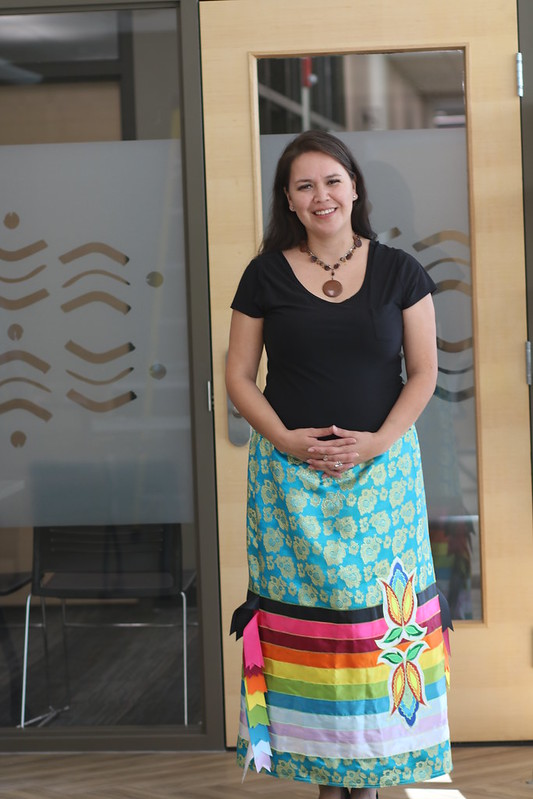 Biography: Boozhoo, my name is Tara Myran and I am registered from Long Plain First Nation and carry Ojibway and Dakota descent from both of my parents. I graduated from University of Winnipeg with a double major in Psychology and Rhetoric Communications in June 2019. I am currently in my second year of the MDP Program and have gained many skills and knowledge that I look forward to utilizing when I enter the workforce upon graduation.
Biography: Boozhoo, my name is Tara Myran and I am registered from Long Plain First Nation and carry Ojibway and Dakota descent from both of my parents. I graduated from University of Winnipeg with a double major in Psychology and Rhetoric Communications in June 2019. I am currently in my second year of the MDP Program and have gained many skills and knowledge that I look forward to utilizing when I enter the workforce upon graduation.
Integrating Indigenous Philosophies and Western Approaches Surrounding Mental Health and Well-Being
This paper explores key aspects of Indigenous Philosophies that have been adopted in one post-secondary plan to address mental health challenges and issues on campus. Drawing on research from Indigenous-guided methodology framed by qualitative interviews with students, faculty, staff and community, specific programs and services were re-envisioned and adapted to recognize the importance and relevance of providing a holistic and inclusive approach to mental health and well-being. Using the Seven Sacred Teachings, these universal principles or values provided an overarching guide for the redevelopment of our student support services delivery. In addition, the Medicine Wheel represents a circle of life and identifies the importance of achieving balance within ones mental, physical, emotional, and spiritual life. Together, these Indigenous Philosophies informed our work and guided our inquiry and process of learning and healing together. Guided by the spirit of the Mikinak, the research team worked with Elders and Knowledge Keepers to inform and influence the journey towards healing and to develop culturally responsive approaches to better meet the mental health needs of our students.
Watch Tara's Presentation

Biography: My name is Ershiya and I’m a second-year master’s student at the University of Winnipeg. I completed my bachelor’s in microbiology with honours in Iran. With a shift in my career and interest from microbiology to (conservation) ecology, I joined Dr. Craig Willi’s bat lab in 2020. My research is mainly focusing on summer roosting and foraging habitat of endangered little brown bats (Myotis lucifugus
Can Climate Affect Summer Nightly Activity in Endangered Little Brown Bats (Myotis lucifugus)?
Climate change threatens biodiversity and understanding how animals respond is important for determining impacts on ecosystems. Most studies focus on direct effects of climate change on populations (e.g., climate envelope analyses) but indirect effects may also cause impacts. In Canada, three bat species are endangered by an invasive disease but they face other threats which could slow population recoveries. My thesis addresses the hypothesis that wildfire smoke (predicted to increase with climate change), affects access to food and water for little brown bats (Myotis lucifugus). I predicted that bats would forage less, and have smaller home ranges, on nights with low air quality from wildfire smoke. I attached radio-tags to 15 bats and used telemetry to follow individuals during the active phase at night. I found that smoke dramatically reduced bat foraging time and home range size with bats remaining in their roosts on nights with especially poor air quality. My results highlight an indirect effect of climate change on endangered bats.
Watch Ershiya's Presentation
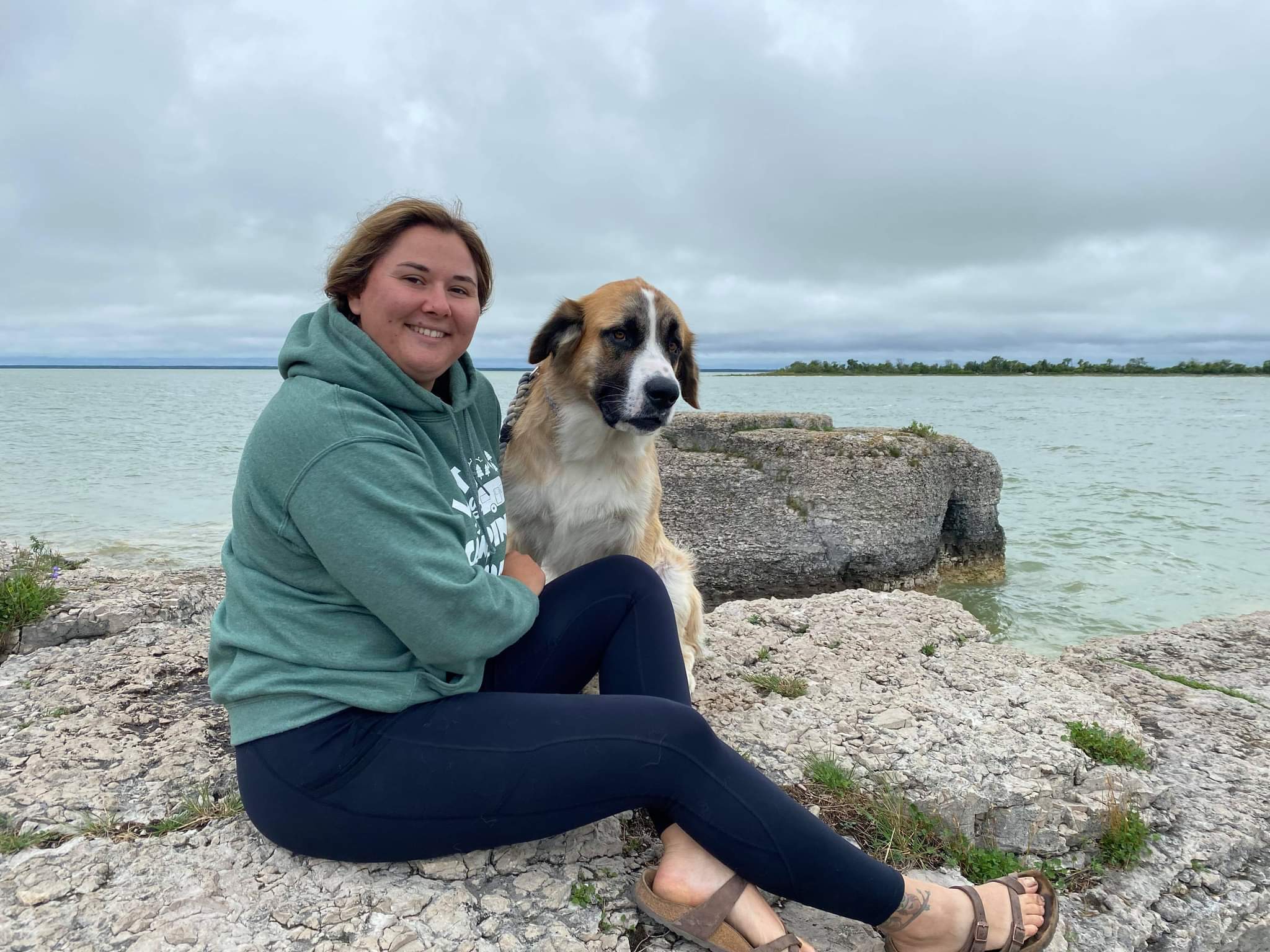
Biography: My name is Nathalie Turenne I am a first year Master’s student in the environment and social change program at the U of W. My Master’s thesis is focused on planetary science and spectroscopy. Within the last year I have been lucky enough to be involved in the Perseverance Rover mission operations for the SuperCam instrument. I am passionate about both the environment and space science making it difficult to choose a future career path. When I’m not doing research I enjoy hiking, camping and anything regarding the outdoors with my dog Oakley.
Reflectance Spectroscopy of Microbially-Precipitated Mg-Carbonates from Atlin Lake, British Columbia, Canada
The landing site of the Perseverance rover - Jezero crater - contains several units with evidence of Mg-rich carbonates which provides a unique opportunity to investigate carbonates with a possible fluvio-lacustrine origin. Carbonates have implications with microbial life as they are known to preserve and entomb microfossils known as biosignatures on Earth. Low temperature microbially precipitated playa sediments were collected near Atlin. Within the reflectance spectra C-O associated features associated with Mg-carbonates specifically magnesite in the ATP, ATM and ATA samples and hydromagnesite in the ATH sample. The samples are likely a mixture of magnesite (2300 nm) and aragonite (2331 nm). The X-ray Diffraction spectra is conclusive with the reflectance of the samples. Using the Atlin playa as an analogue site will advance our understanding of processes under which Mg-carbonate minerals form and precipitate with microbial interactions in low-temperature mafic lacustrine environments similar to the paleoenvironment of Jezero crater, Mars.
Watch Nathalie's Presentation
Biography: Aimee Rodriguez Louis is an educator, mother and friend who currently resides in Winnipeg Manitoba. She is a registered member of Wuskwi Sipihk First Nation and is completing her fourth and final year of the Master of Arts Indigenous Governance program at the University of Winnipeg.
Miyo pimātisiwin opikināwasowin (Self-determination in Child-rearing)
The mīkiwahp (tipi) is used as the conceptual framework of what self-determination in child rearing would look like today. Using a creationist lens to apply the teaching that every person is created with unique gifts, purpose and plan, a Spiritual Framework and Circle of Life analysis are utilized to gain insight on moving forward in times of reconciliation on Turtle Island (North America).
The goal of this Indigenous Research Study is to create seeds of light that will inevitably change the discourse from pathologizing First Nation parents to empowering them with traditional knowledge by:
- Creating purposeful literature connecting the First Nation right to self-determination with the right to determine own family structure and child rearing practices.
- Use of an Indigenous Research Paradigm and Spiritual framework to create recommendations which will inform culturally relevant and inclusive practices in child rearing.
- Interviewing a gender diverse sample to gain narratives on how the Tipi Teachings can be used to promote healing among Indigenous communities.
Watch Aimee's Presentation

Biography: I am a Master’s student and a graduate (machine learning) researcher at TerraByte research group of computer science department. At TerraByte, our missions are generating labelled plant data, developing machine learning models, and constructing a plant image database. My current area of research lies in applying machine learning techniques on hyperspectral image data.
Higher Agriculture Productivity and Sustainability in hands of Digital Green Revolution
Food insecurity becomes an importunate issue by the growth of the global population. Hence, in order to have sustainable food, we have to optimize the efficiency of agriculture and that is where the digitalization of agriculture plays a vital role. Here are some drawbacks of traditional agriculture which tremendously harm the environment: facing water shortages, the release of harmful greenhouse gases into the atmosphere, and the eutrophication of waterways.
Now, by the advancement of imaging technology, we are now able to go beyond RGB camera and have more powerful identification capability through hyperspectral camera to monitor the biochemical and biophysical attributes of agricultural crops through measuring the spectral content of light in every single pixel of the scenery image to determine the healthy growth procedure of them before they enter into their disease phase and also helps to better differentiate between similar crops and classify them with the utilization of machine learning techniques.
Watch Nooshin's Presentation

Biography: I am in my first year of the Bioscience, Technology and Public Policy program here at the University of Winnipeg. I completed my undergraduate degree in Biology with an Honours Specialization in Animal Behaviour at Western University in London, ON, where I also completed an M.Sc. in Cognitive, Developmental and Brain Sciences working under Dr. William Roberts. Broadly speaking, I am interested in behavioural ecology and conservation.
Venison, squirrel or beef? Individual variation in coyote diet
Livestock carrion can subsidize predator populations, which may increase predation on species at risk. Previous research found that coyote scat in southwestern Saskatchewan contained cattle throughout the year. Scat containing prairie dog was close to colonies, while scat containing cattle was widely distributed. I hypothesize that individual coyotes specialize on either prairie dogs or cattle carrion. Further, I will see how individual diet variation affects the ranging and social interactions of coyotes. I will use genetic analysis of coyote scat to identify individual diet variation and ArcGIS to identify geographic factors influencing diet. Although I expect individuals to specialize on either prairie dogs or cattle, I expect most coyotes rely heavily on cattle obtained as carrion. If my results suggest that the coyote population is being sustained by livestock carrion, I will identify potential management strategies to reduce carrion availability, which may benefit species at risk and smaller competing predators.
Watch Shayla's Presentation

Biography: Madelynn is a graduate student at the University of Winnipeg in the Master of Environmental and Social Change program. Her primary research interest includes the movement of phosphorus in both soil and water. More specifically, her current research fucuses on the release of phosphorus from soils during the spring snowmelt period. She has been studying this topic over the last few years under the supervision of Dr. Darshani Kumaragamage and now, also Dr. Doug Goltz. Madelynn graduated from the University of Winnipeg in the Fall of 2021 with a B.Sc with honors in Environmental Science.
PHOSPHORUS: Why should you care?
Runoff caused by snowmelt is the main pathway of nutrient transport from agricultural lands to freshwater systems in the Canadian prairies. Spring snowmelt occurs rapidly and causes flooding in low lying areas, inducing anaerobic soil conditions. Anaerobic conditions often enhance P release from the soil into the floodwater. Additions of soil amendments, such as gypsum, alum, and magnesium-sulphate have been shown to effectively decrease P release from soils to floodwater. However, the residual benefits of these amendments have yet to be determined. This study will investigate the effects of gypsum, alum, and magnesium-sulphate in reducing P losses 18 months after amendment application during snowmelt flooding in both laboratory and field settings. The laboratory experiment consisted of 16 intact soil columns taken from the amended field plots and were flooded at +4 ℃ for 49 days to simulate spring snowmelt flooding. On a weekly basis, redox potential was measured, and samples of pore water and floodwater were extracted and analyzed for dissolved reactive P (DRP), and pH. In the laboratory experiment, all treatments saw an increase in both porewater and floodwater DRP concentrations over the flooding period. However, the alum-amendment significantly decreased porewater DRP concentrations when compared to all other treatments. In contrast the effect of the alum-amendment was not observed in floodwater DRP concentrations. These results will be further investigated with the field experiment occurring in the spring of 2022.
Watch Madelynn's Presentation
Biography: Kirstin is a mother and grandmother with a strong connection to community and a passion for Indigenous self-determination and sovereignty. She lives with her family on a small piece of land in St. Malo Manitoba but grew up in the North End of Winnipeg. Her family is from Long Plain First Nation and she is of the Bear Clan.
Fighting Fire with Fire: Amplifying the Voices of Indigenous Fire Affected Communities across Western Canada
Indigenous communities face unique jurisdictional and infrastructure challenges in the fight against climate change related disasters, specifically forest fires and resulting evacuations, and further research to identify the cultural, social, and biophysical impacts is needed. Following an Indigenous framework, using mixed methods, my project will merge Indigenous and Western ways of knowing. Through participatory filmmaking, this project will document the human dimensions of fire risk and the opportunities for community capacity for resilience. A quantitative survey will further identify community-level risk perceptions and their geographical distributions and differences to better understand regional knowledge, capacities, and opportunities to adapt to climate-related fire risk. Existing research on the impacts of forest fires and resulting evacuations on Indigenous communities is sparse, and this project will fill a clear research gap while simultaneously creating real-world solutions for communities to prepare in a manner that is based on their Indigenous and local knowledge.
Watch Kirstin's Presentation
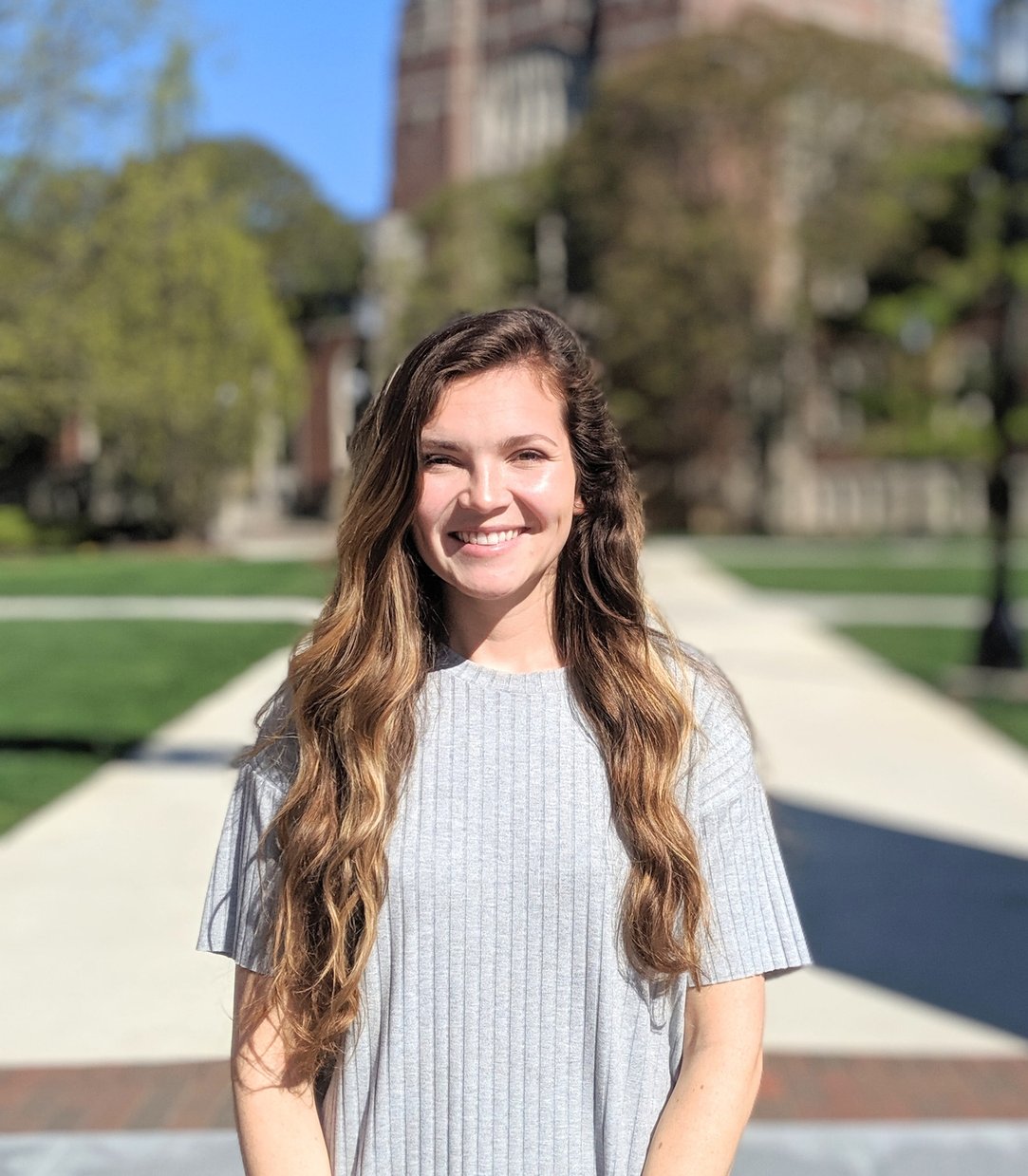
Biography: Sophia Brown is a 2nd year MSc student in the UW Bioscience, Technology, and Public Policy program. Her research focuses on tracking little brown bats to discover their fall habitat preferences. She is interested in both disease ecology and conservation biology research and how those two subjects intersect.
Identifying fall critical habitat of endangered little brown bats
Identifying and protecting critical habitat is fundamental to endangered species conservation. Little brown bats (Myotis lucifugus) are endangered by the disease, white-nose syndrome (WNS) and, while data exist on critical habitats during hibernation and summer reproduction, nothing is known about fall requirements when bats swarm at entrances of hibernation sites, mate, and fatten for hibernation. Understanding whether bats roost and feed close to swarm sites, and identifying fall roosting and feeding habitat, could enable management actions that help bats accumulate large hibernation fat reserves and survive the winter with WNS. I radio-tagged 40 little brown bats and tracked them to roosts and foraging locations throughout September 2021. Bats (n=6) were found roosting exclusively in natural structures, including snags, live trees, and caves. Home range size varied widely (62 m2-3.6 km2, n = 8 bats). My results suggest that large areas around hibernacula may require protection to help bat populations recover.
Watch Sophia's Presentation
